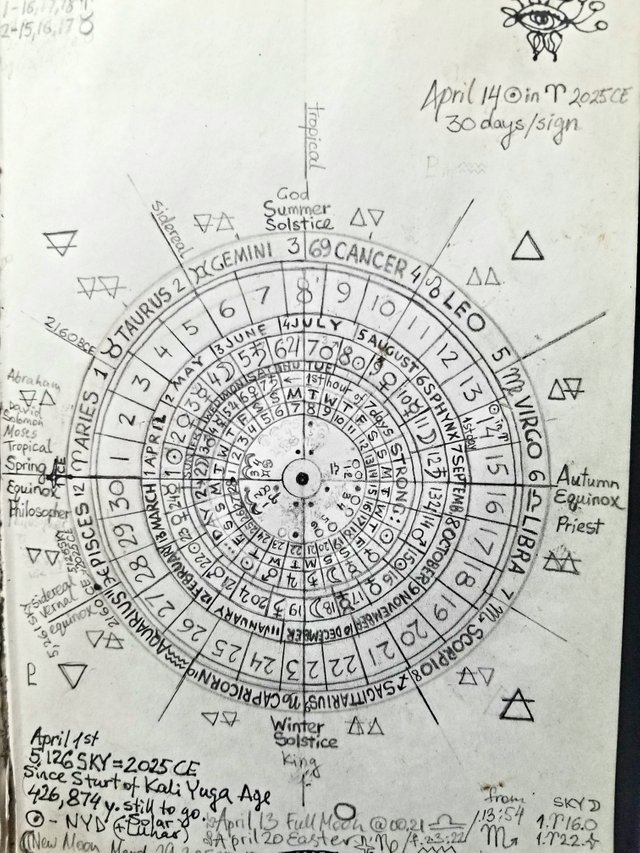CALENDAR UPDATE
/ / / / / / / ○ \ \ \ \ \ \ \
STANDARDIZING SOLAR & LUNAR CALENDARS AND ALIGNING IT WITH THE DAYS OF THE WEEK
After giving some thought, I have decided that the best way to synchronize the lunar and solar calendars with the seven days week is to combine the extra days that are left in both solar and lunar calendars at the end of the year into sets of 7 days, a week, which then can be added into the weekly rotation of the days of the week as necessary to synchronize both solar and lunar calendars with the solar year.
With the goal to standardize all months to have same number of days, I have arranged my solar calendar into 12 months of 30 days each = 360, and the lunar I kept as is traditionally at 13 lunar months of 28 days each = 364.
Now lunar 364 ÷ 7 = 52 weeks, sets of seven days, whereas solar 360 ÷ 7 = 51.4285... the angle of Great Pyramid at Giza, so about equal number of weeks in both solar and lunar cycles.
Anyway, to continue, the solar year is approximated at 365 days, 5 hours, 48 minutes, and 45 seconds; which is about 365.24219 days long or roughly 365 days of 24 hours each plus one quarter of a day, thus over four years adds up to one full extra day, so called leap year.
The Synodic month of lunation lasts 29 days, 12 hours, 44 minutes, and 3 seconds, while the Tropical year, the cycle of Solstices and Equinoxes, is 12.37 Synodic months. This is why the Muslim Synodic calendar drifts against the seasons of solar Gregorian calendar.
The Jewish calendar, also lunar, reconciles the difference with the solar calendar by adding additional months to the lunar year in 19-year cycle, called 'Small Cycle' consisting of 12 common years with 12 months and 7 leap years; 3rd, 6th, 8th, 11th, 14th, 17th, and 19th year, with 13 months, totaling 235 lunar months.
Now, that is a bit complicated and hard to remember. For myself, I prefer to organize the lunar and solar calendars to be in sync with the days of the week cycle as the oldest human institution in continuous use.
Thus, in order to accomplish it, in lunar calendar of 364 days year one week must be added after 1st seven years, then one week after second set of seven years thereafter, then two weeks seven years after that, one week again seven years later, and two weeks again after that then repeating the cycle, in order to sync it with the solar year and the week, whereas in solar calendar of 360 days one week is added at the end of the year except for leap years. You can do the math.
This way the number of days in both solar and lunar calendars is equal, 30 in solar and 28 in lunar, both calendars are in sync with the solar year, and both systems are corresponding to the unbroken sequence of days of the week, or strong / set days as I like to call it. Last year (5,125 Since Kali Yuga Age 'SKY' / CE 2024) being leap year means that new cycle starts in 5,126 SKY.
https://steemit.com/time/@theuniverse.name/6eqcha-time-and-calendar
♡
_ \ \ | / / _
